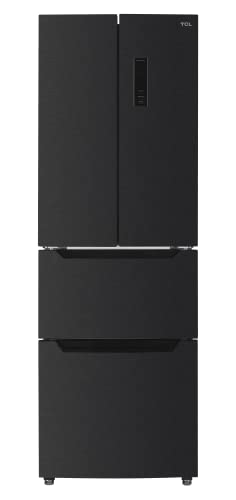The Ultimate Guide to Buying a Fridge: Making Smart Choices for Your Kitchen
When it comes to necessary kitchen area home appliances, few products are as vital as a refrigerator. It is the heart of the kitchen-- keeping your food fresh and your active ingredients at ideal temperatures. Nevertheless, selecting the best fridge can be a complicated job, given the variety of styles, sizes, and innovations available on the market. This guide will supply valuable insights into the factors to think about when purchasing a fridge, common types, and frequently asked concerns to assist you make a notified choice.
Key Factors to Consider When Buying a Fridge
To streamline your decision-making process, here are the core aspects one should think about when wanting to buy a fridge:
1. Size
- Kitchen Space: Measure the area in your kitchen where the fridge will be put. This consists of examining entrances to ensure the fridge can be provided without problem.
- Capacity: Consider just how much food you generally store. A larger family might require a fridge with a capacity of 20-26 cubic feet, while smaller sized households might find 10-18 cubic feet enough.
2. Design
- Leading Freezer Refrigerators: A traditional option that includes a freezer on top. They are usually more cost effective and energy-efficient.
- Bottom Freezer Refrigerators: Offers benefit by placing the refrigerator section at eye level. Suitable for those who access fresh food more frequently.
- Side-by-Side Refrigerators: Provides easy access to both freezer and fresh food sections. Good for narrow kitchen areas.
- French Door Refrigerators: Combines the benefits of bottom freezers with side-by-side designs. They often come with extra functions such as ice and water dispensers.
- Compact Refrigerators: Perfect for small spaces like dormitory or workplaces.
3. Energy Efficiency
- Look for energy-efficient designs to conserve on electrical energy bills. Inspect the Energy Star label, which shows that the appliance satisfies or surpasses energy efficiency standards.
- Think about the average yearly energy usage reported in kilowatt-hours (kWh).
4. Functions
- Ice and Water Dispenser: Convenient for immediate access to ice and filtered water.
- Smart Technology: Some fridges come geared up with Wi-Fi connection that permits you to monitor and change settings from your smartphone.
- Adjustable Shelves and Bins: For customizable storage to accommodate tall items.
- Temperature Control Zones: Different areas might have various climate controls for optimum storage of numerous foods.
5. Price
- Set a spending plan. Fridge costs can range from a couple of hundred to numerous thousand dollars depending on design, size, and functions.
- Think about extra costs such as prolonged service warranties, shipment, and setup.
Comparative Table of Popular Fridge Styles
| Fridge Style | Average Price Range | Pros | Cons |
|---|---|---|---|
| Top Freezer | ₤ 400 - ₤ 1,200 | Inexpensive, energy-efficient | Restricted functions |
| Bottom Freezer | ₤ 900 - ₤ 2,500 | Easy access to fresh food | Can be expensive |
| Side-by-Side | ₤ 600 - ₤ 3,000 | Great organization, easy gain access to | Freezer space can be limited |
| French Door | ₤ 1,200 - ₤ 4,000 | Spacious, trendy, often feature-rich | Greater cost point |
| Compact | ₤ 150 - ₤ 600 | Space-saving, portable | Minimal storage capability |
Frequently Asked Questions (FAQs)
1. How long do fridges typically last?
Generally, a well-maintained refrigerator can last around 10 to 20 years. Regular maintenance, such as cleaning up the coils and inspecting door seals, can prolong its life expectancy.
2. How can site maintain my fridge efficiently?
- Keep the coils tidy to help preserve energy effectiveness.
- Guarantee that the door seals are tight to prevent cold air from escaping.
- Frequently thaw (if appropriate) and tidy the interior to prevent accumulation of germs and smells.
3. Do I require to pay for shipment and installation?
Most merchants charge for delivery and installation, however this fee can in some cases be waived during promotions. Always validate the charges before completing your purchase.
4. What should I do if my fridge is not cooling effectively?
Start by examining the temperature level settings and ensure the vents are clear of any blockages. If the issue continues, it might be necessary to seek advice from an expert repair service.
5. How can I figure out the size of the fridge I need?
As a basic standard, allow for about 4 to 6 cubic feet of area per individual in your household. Nevertheless, this can differ based upon individual cooking and storage routines.
Purchasing a refrigerator might appear easy, however it needs mindful factor to consider of numerous factors. By evaluating your requirements and preferences in regards to size, design, functions, and energy performance, you're better placed to choose a fridge that will serve your home well for years to come. This guide intends to streamline the intricacies associated with fridge shopping, empowering you to make an informed decision that will improve your kitchen experience. Whether you're upgrading or buying your very first system, a little research study can result in a refrigerator that completely fits your lifestyle and culinary routines.

